7 Highlights from Actionstep’s 2024 US Midsize Law Firm Priorities Report
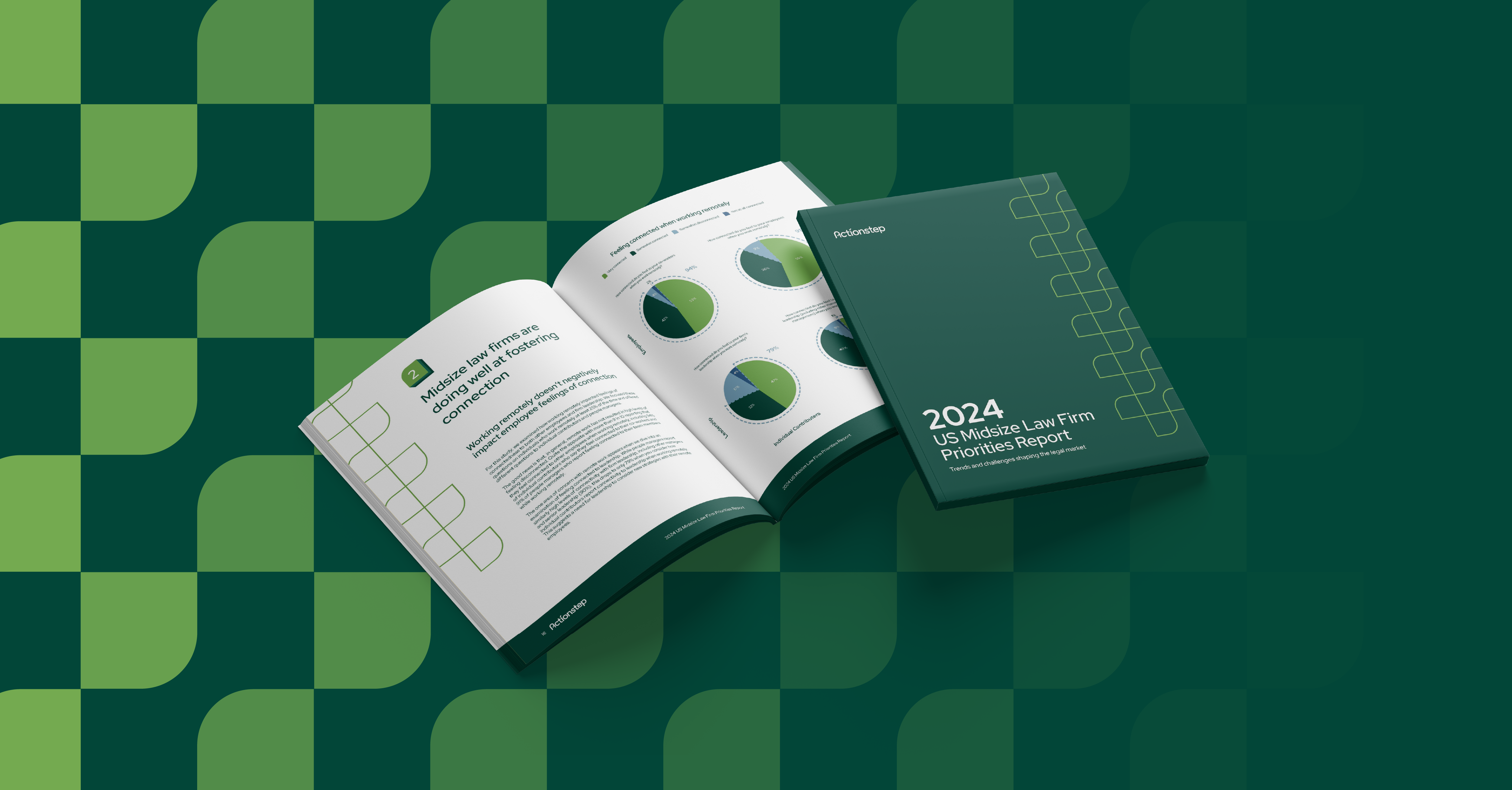
Keeping up with the rapid evolution of the US legal market is an ongoing challenge for all firms—but the way firms manage this differs significantly. Small law firms often possess the agility to quickly adapt and pivot. Meanwhile, large firms can tackle change armed with big budgets and sizable headcounts. So, where exactly does that leave midsize law firms? How do they keep up to date with trends and technologies? What challenges are they currently grappling with, and what are the best strategies they can deploy to stay one step ahead?
Throughout our 2024 US Midsize Law Firm Priorities Report, we dig into the findings in detail. We examine what the data reveals from nearly 400 law firm professionals across generations working at midsize firms in the United States while offering explanations as to why this might be the case. This blog post focuses on our key findings from the report that examines these trends. Let’s find out what surfaced!
1. Stress remains a fact of life
Unfortunately, law firm employees’ stress levels remain high across the board. 72% of professionals at midsize law firms are experiencing stress, burnout, or overwhelm from work, which is unchanged from 2023. This is perhaps unsurprising. Year after year, law firm professionals are being asked to do more with less in response to clients’ ever-increasing expectations. This is layered with stress from economic concerns, demand and pressure from clients, and understaffing or lack of resources.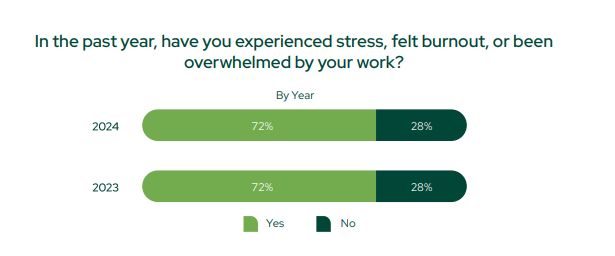
2. Law firms are taking the right steps to relieve stress
On the bright side, in 2024, 95% of law firm professionals have taken steps to relieve their work stress in the past year. The most frequently used approaches to relieving work stress included team building activities, mental health resources, and supportive leadership. In 2023, we asked what could help alleviate stress at work, 43% said clear processes to follow, 27% said supportive leadership, and 21% said mental health resources. When we look at which resources have helped the most to relieve stress in 2024, mental health resources (78%), clear processes to follow within law firms (74%), and supportive leadership (73%) ranked in as the top three.
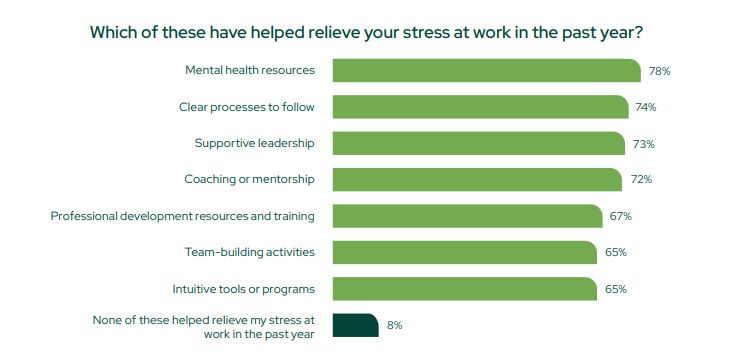
3. Midsize law firms are doing well at fostering connection
In general, remote work has not resulted in high levels of feeling disconnected. Quite the opposite with more than 9 in 10 reporting that they feel connected to other employees when working remotely, including 94% of individual contributors who say they feel connected to their co-workers and 91% of people managers who report feeling connected to their team members while working remotely. When looking at generational differences of employees working remotely, Gen Z is least likely to say they feel connected to their firm’s leadership. This implies that senior leadership may need to adapt their engagement strategies to bridge the gap with each demographic.
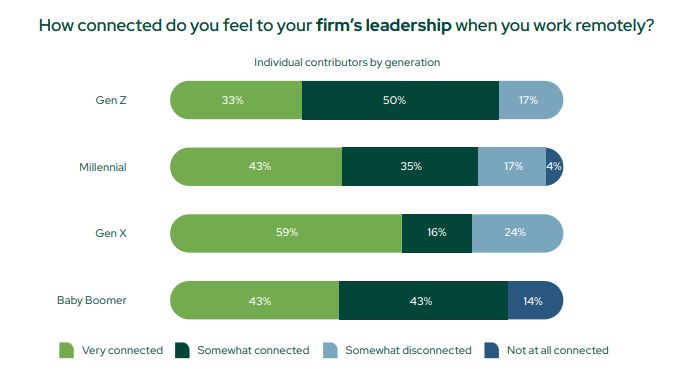
4. Non-billable tasks continue to impact productivity
It would be difficult to find a law firm professional who doesn’t feel bogged down by non-billable tasks, at least occasionally. Often these administrative tasks take away from other skilled tasks and opportunities to focus time on revenue-generating work but are still crucial to a law firm business. More law firm professionals feel they are spending too much time on non-billable tasks compared to 2023. In 2024, 62% said they spent a disproportionate amount of time on non-billable tasks, up notably from 52% in 2023.
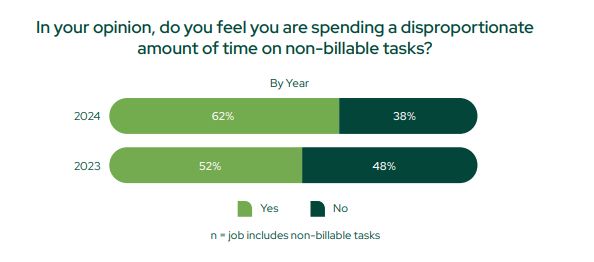
5. Too much time spent on non-billable work is related to high stress levels
Interestingly, there is a very strong correlation between law firm professionals who feel they spend too much time on non-billable tasks and those who have experienced stress, felt burnout, or been overwhelmed by work in the past year. 8 in 10 (80%) of those who say they spend too much time on non-billable tasks have felt stress from their work. That is far higher than the 58% reported by those who feel they don’t spend too much time on non-billable tasks. This is an important reminder that reducing non-billable time for employees is something that law firms could consider addressing to improve employee satisfaction. Midsize law firms can achieve this by implementing the right tools that improve productivity.
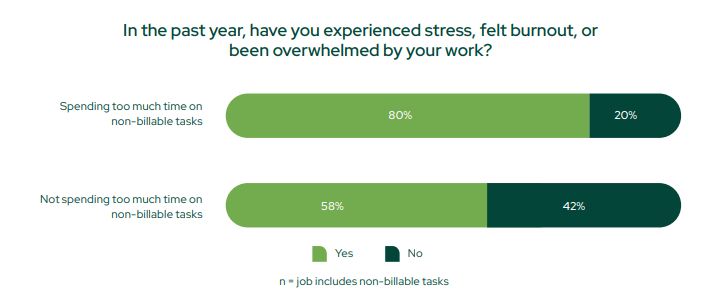
6. Law firms are adapting how they invest in technology
The top firm business priority for driving revenue in 2024 was improving client satisfaction, and technology is key to getting there. 65% of midsize law firm professionals say their leadership team has invested more in technology in the past year, that’s a notable increase from last year (60%). Primary motivators for their investment in technology in the past year included consistent quality of work, access to client files from anywhere, increased data security needs, and reliance on technology to reduce overall costs.
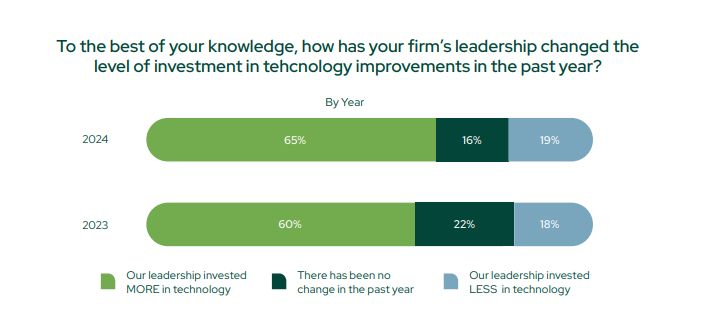
Last year, our survey revealed that automatic updates or reminders, client portal, appointment settings, and two-way text messaging were the most important tools respondents thought would benefit their clients, but their firms didn’t currently offer. This year we asked, “what types of online capabilities does your firm provide to clients?” and the top responses were online payments, client portal, document signing, and document review.
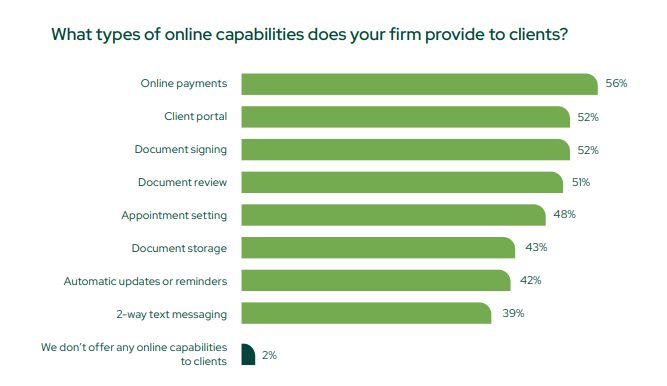
7. Technology approaches need to consider generational differences
It’s important for us to note that the generational divide in law offices is expanding. Gen Z and Millennial employees grew up in a world that Baby Boomers could never have imagined at those ages, and Gen X experienced massive technological changes during their careers. As non-billable tasks continue to grow, stealing valuable time and energy from employees, law firms can help manage the potential for employee fatigue in an ever-changing workplace, with notable generational differences. When looking specifically at what would make time spent on billable work more efficient, Gen Z is most likely to advocate for better systems that eliminate the need to enter the same information into different tools.
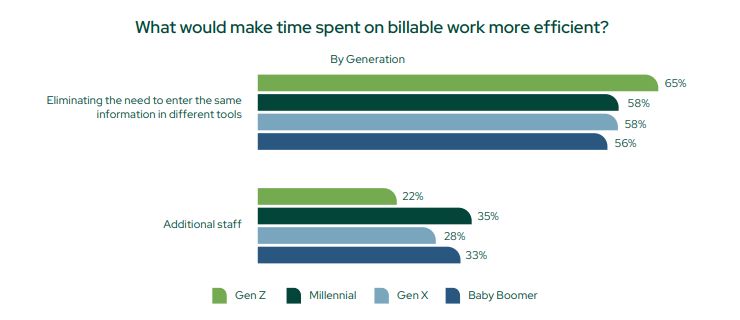
The future is bright for midsize law firms
Our research this year shows that midsize US law firms are facing six major challenges: workplace stress, ensuring connection among remote and hybrid teams, the continuing distraction of non-billable tasks, the need to streamline tech stacks, centering solutions around client satisfaction, and safeguarding data security. However, technology offers a beacon of hope, but it requires a delicate balance of meeting the needs of employees and the investments that law firms can make.
Read more about all the trends gathered from our research and apply our key takeaways to your 2024 strategy by downloading the full report here.


